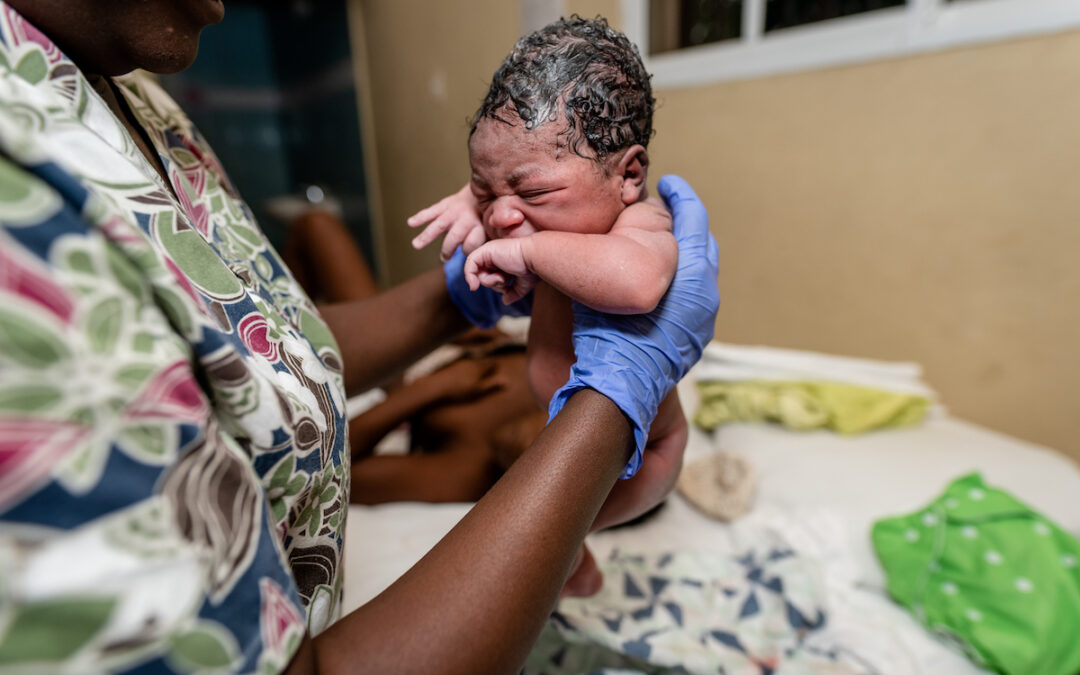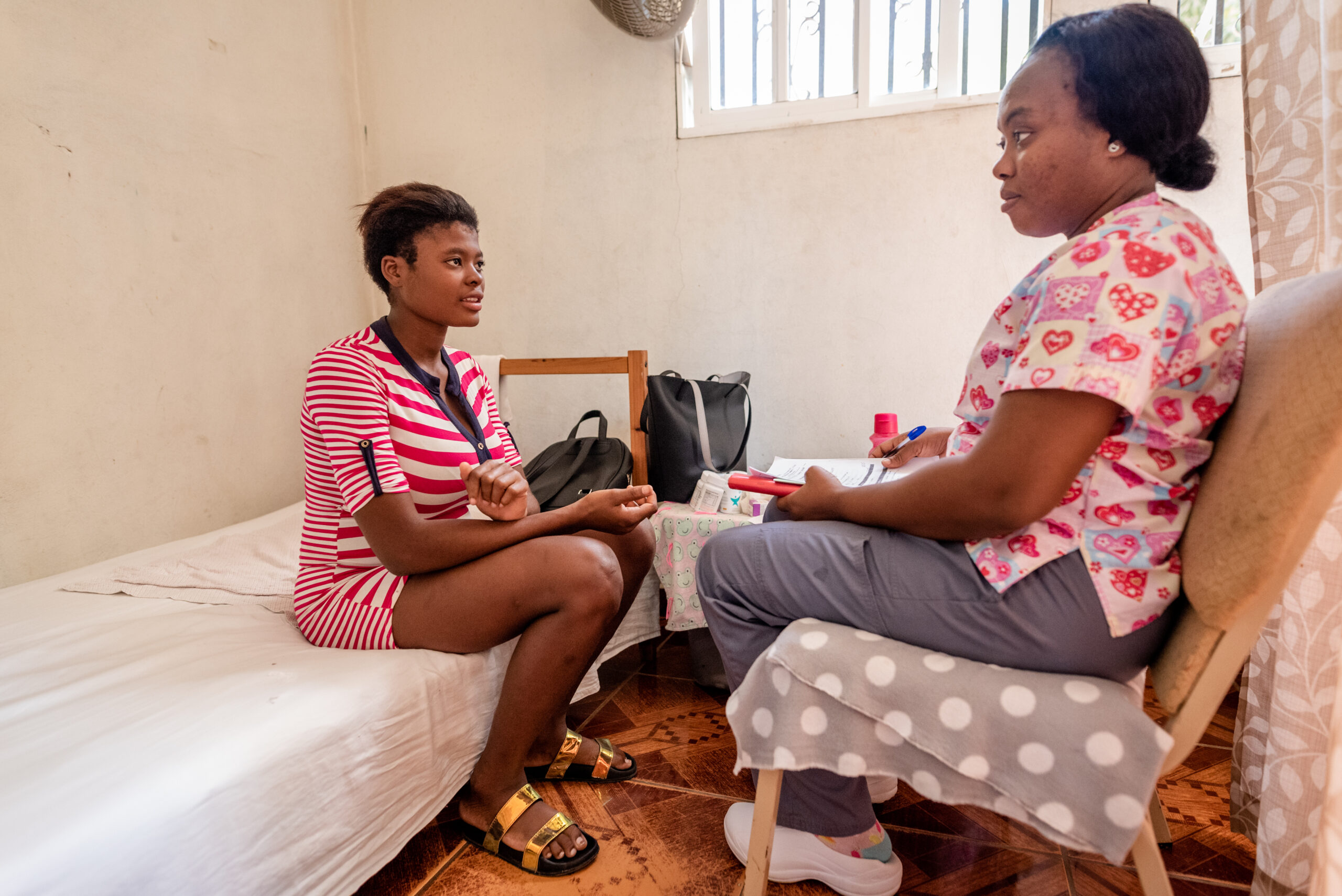Pregnancy is a beautiful experience, and it can be full of questions for mothers and fathers to be.
With so much to consider in preparation for this new life, the question of where to birth is top of mind for many expectant parents. In the United States today, 98.4 percent% of expectant mothers choose to birth in a hospital while others prefer a home birth or stand-alone birth center.
It’s a personal choice, and your choice to make ultimately. Learn about what a birth center is, if it’s safe, the estimated cost, and more!
What is a Birth Center?
Freestanding (also called stand-alone) birth centers are birthing facilities that are not attached to a hospital, although they are often close by for emergency transfers. Some hospitals have private birthing units with bathtubs and a couch, but those are different than freestanding birth centers.
Birth centers can be staffed by a variety of qualified individuals including professional midwives, nurses, obstetricians, family medicine and pediatric practitioners, and more. They are guided by the belief that women have the right to make informed decisions about their health and the health of their babies, and that pregnancy and birth are normal life processes with excellent outcomes when attended within the midwifery model of care.
While each freestanding birth center is different, there are some generalizations that exist across facilities. They are the following:
- A birth center may feel home-like with private rooms with a tub for soaking or birthing in and a large bed to snuggle with your baby and family after the birth
- Loved ones are welcome during the birth of the baby
- Women can eat and drink and walk freely in labor, unattached to monitors and IV poles
- You get one on one care in labor, and baby heart tones are listened to with a doppler
While birth care is a critical element of a birth center, centers around the country offer full prenatal and postpartum care as well as lactation services following your baby’s birth.
Is a Birth Center Safe?
The American Association of Birth Centers (AABC) claims that the best candidate for a birth center birth is a pregnancy of one baby (no multiples) where the baby is head-down (not breech) and full term (37 weeks, 0 days and 40 weeks, 6 days).
A 2020 National Academies study study found that women receiving prenatal care at a birth center and admitted in spontaneous labor after 37 weeks experience a lower rate of neonatal mortality than women receiving care from a hospital. Hospital births had a .04 rate of neonatal deaths while birth center births had a .03 rate of neonatal deaths.
The data shows different rates based on gestation and whether the mother had a Certified Nurse Midwife or an MD.
There was not enough data to share how birth centers impacted maternal mortality when compared to hospital births. However, a study published in the Journal of Midwifery and Women’s Health showed no maternal deaths associated with birth center care.
We know that women who give birth at birth centers have lower rates of interventions like induced labor or cesareans. As a result, women are less at risk for the complications that come with those interventions (i.e. hemorrhaging or infection).
Nationally, the cesarean rate for in-hospital births is 31.8% and climbing over the last few years. In birth centers, the need for a cesarean (and subsequent hospital transfer) is 6% of all patients.
If you’re considering a birth center birth, contact your local center to request specific safety data and inquire about the certification of the midwives and other providers on staff. You may request the same maternal and neonatal mortality data from your hospital to compare.
Are Birth Center Covered by Insurance?
While it depends on a number of factors that include individual health coverage and deductibles, a birth center is often considered a cost-effective alternative to a hospital birth.
Many health insurances have contracts with birth centers for reimbursement. Contact your local center or insurance company to inquire.
How Much Does it Cost to Give Birth at a Birth Center?
The cost depends on your state and which facility you choose. It is usually less expensive for complete prenatal, birth, and postpartum care at a birth center than at a hospital.
Consider also that at a hospital you have higher cesarean rates and higher NICU admits for baby, which drive up costs. If you have insurance, most copays are 2,000 to 4,000 dollars for birth center services. If you are a cash pay patient, most birth centers are about 8,000 dollars for complete care.
Birth centers don’t have as much space as hospital labor and delivery units, so if you’re hoping to utilize a birth center, contact them as soon as you’re able.
You can find a CABC-accredited birth center in your area by searching on the Commission of Accreditation of Birth Centers’ website.
Support International Birth Centers: Give to MamaBaby Haiti
Safe birth care is not available to everyone, especially in Haiti, which has the highest maternal and neonatal mortality rate in the western hemisphere. Without care, many women give birth on the dirt floor of their homes without proper sanitation or hygiene.
In Haiti, 1 in every 208 women die from pregnancy, childbirth, or immediately afterwards. One in every 21 infants do not make it to the age of 1. MamaBaby Haiti has set out to change that.
MamaBaby International (known as MamaBaby Haiti) is a non-profit that runs three birth centers, health clinics, and a midwifery school in Haiti. We provide a safe place for Haitian women to receive compassionate and respectful care at the hands of skilled midwives. No one is turned away, because no person should die because of where they live.
View MamaBaby’s Platinum Transparency rating on Guidestar >
To give today so a mother in need can receive professional prenatal, birth, and postpartum care, visit MamaBabyHaiti.org today.



